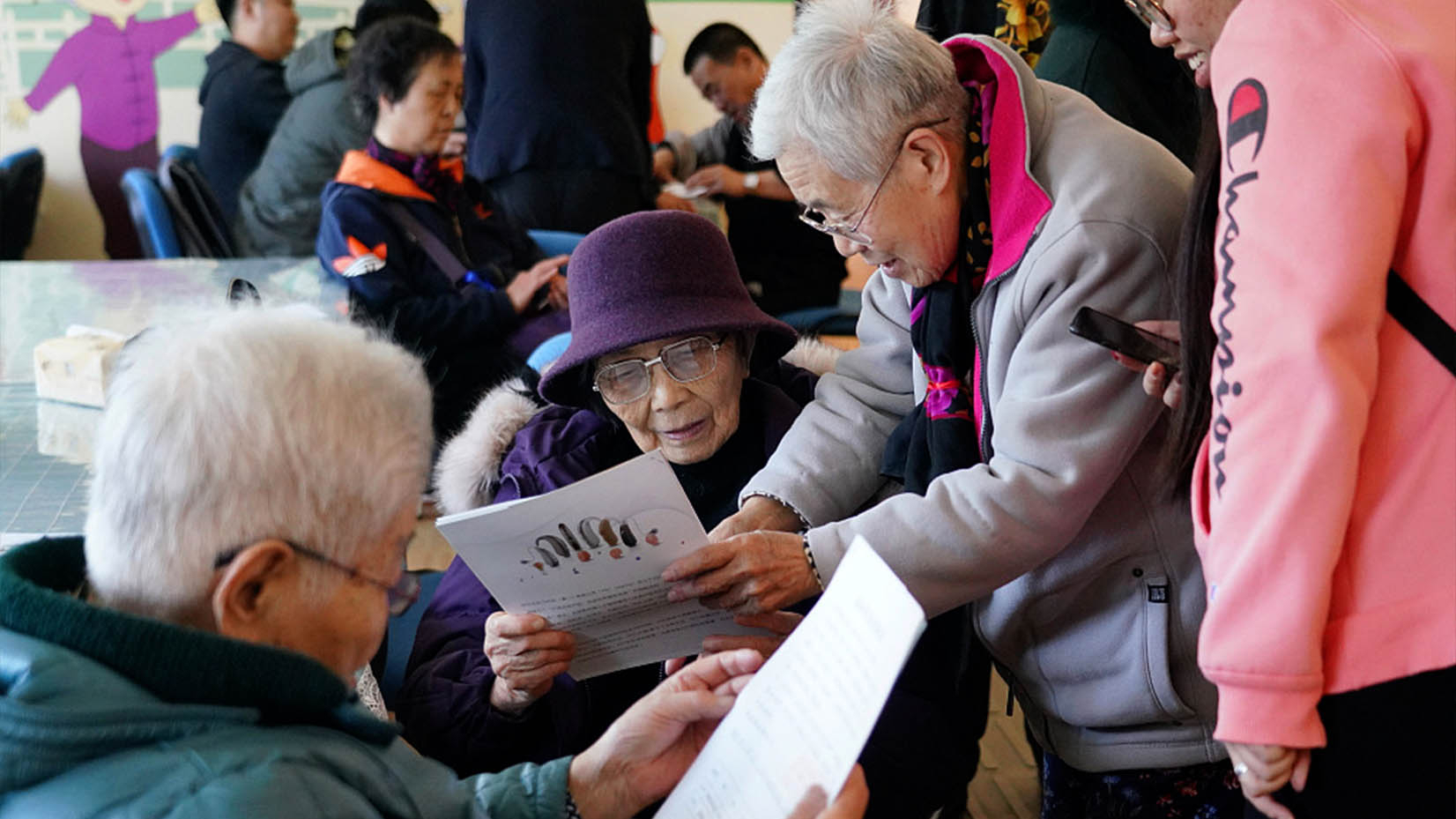
Domestic
17:09, 22-Mar-2019
Can China handle its aging population?
Updated
22:47, 22-Mar-2019
Li Jianhua
04:04

It is estimated that about a third of China's population will be over 60 by 2050, according to China's National Working Committee on Aging, and the costs for elderly care are expected to hit 25 percent of the country's GDP, up significantly from seven percent last year.
The challenges brought by the nation's aging population are swooping down on the Chinese society. Many are wondering if the country is prepared to facilitate the elderly through the last few years of their lives.
The southern city of Guangzhou has been considered one of the pioneers in the country's elderly care service, and a series of pilot programs in the sector have been implemented here, then copied and promoted in other parts of China. Mostly notably, the local government is striving to promote an "elderly care insurance," which is new to the country.
To meet the demands of the rising elderly population, various elderly care services have been applied nationwide, including state-sponsored and privately-owned nursing homes and those in the neighborhoods and communities.
CGTN visited the Guangzhou Nursing Home, a state-sponsored facility, which currently is capable of accommodating about 1,200 senior citizens. A hospital specialized in elderly care service is also included in the system.
"Across China, there are not enough beds available; while in some places, there are some beds left empty. This is a structural problem – the needs and demands are not perfectly matched," said Chang Guangcai, Deputy Director of Guangzhou Nursing Home. "China has been striving to improve nursing homes' service quality. We do see some progress, but there is an imbalance. Gaps are felt between urban and rural areas in various regions."
Chinese authorities have been promoting the idea of "1,000 to 35" – namely, there should be at least 35 beds available for every 1,000 elderly people. And Guangzhou met the standard years ago, ahead of many other provinces and regions, according to Guangzhou Civil Affairs Bureau.
Nevertheless, the bar has been raised higher to meet the rising demands generated by the aging population. A state-sponsored nursing home is not always available due to limited bed availability, and an entrance quota is set up.
Privately-owned nursing homes have been mushrooming in recent years and have been taking in a large proportion of the expanding elderly population, despite higher pricing.
"I have been alone at home since my husband passed away," said an 88-year-old living in Rongyue Nursing Home, under one of China's largest real estate developer Vanke. This is true for many of the elderly living here - nearly 300 of them altogether – and some group activities help them better spend their remaining years.
"Most people are eyeing our high-quality service, especially our medical care facilities and capabilities. More importantly, the elderly can make new friends, and more fully enjoy life. This can help lessen the burden on their children," said Chen Yao, Chief Executive Partner of Senior Care Business, Southern China Area of Vanke.
China's child policy and industrialization of elderly care
China's "one child" policy was introduced in the late 1970s, with an exemption for ethnic minorities. Families with Han ethnicity – the majority of the Chinese population – were fined if found giving birth to two (or more) children. Worse, they could lose their jobs, especially those who held government-related job positions. Nevertheless, some Chinese Han families still opted to have more children.
The "second child" policy was introduced in two phases, in 2014 and 2016. In the 2014 version, a couple could have two children on condition that either the husband or the wife was an only child. This limit was lifted completely in the 2016 version.
Research shows China's population will peak around the late 2020s, and experts predict the peak shouldn't make too much of a difference, even if the government relaxes its current policies even further.
The "one child policy" is believed to be placing a significant burden on the only children as their parents grow older – a couple can end up taking care of four parents and their children. Some measures have been taken to relieve the burden on these only children, who receive subsidies from the local governments starting in 2019, with the amount of money depending on which province he or she was born into.
"Declining birthrate has become a global trend," said Professor Zheng Zhenzhen of Population and Labor Economics, Chinese Academy of Social Sciences.
It's estimated that Africa may be the last remaining front of major population growth in about 20 years' time, as families in Europe, the Americas and Asia opt to have fewer children – or no children at all in some cases.
Experts say the standard of elderly care service is blurry, and this gives more private investors opportunities to pry open the shell of the elderly care service, which used to be taken care of by the government funding.
"Industrialization of the elderly care system can attract more private investment, which could help with the service's distribution to help needs meet demands. The problem is this is not merely an industry; it's also a social service. The total industrialization of this industry would make some excluded from this social service," said Liu Chunsheng, an associate professor at the Central University of Finance and Economics.

SITEMAP
Copyright © 2018 CGTN. Beijing ICP prepared NO.16065310-3
Copyright © 2018 CGTN. Beijing ICP prepared NO.16065310-3